According to the MoneyTree Report from PwC, the life-sciences industry continues to be the second most invested destination after software, in terms of dollars.
Life-Sciences’ VC Investment
 The life-sciences’ record-high investment spree of 2015 came to an end in Q4 with the lowest quarter of investments during the year, signaling a slow down in the record trend, which analysts say is not common.
The life-sciences’ record-high investment spree of 2015 came to an end in Q4 with the lowest quarter of investments during the year, signaling a slow down in the record trend, which analysts say is not common.
Although there are expectations that investments won’t match 2015 peak levels, 2016 investments to date by dollar continued at a strong pace. (At press time, fourth-quarter results were not available.)
The life-sciences’ share of total venture funding grew to 23% during the third quarter of 2016 from 18% during the third quarter of 2015.
According to PwC, the biotechnology industry received the second largest amount of venture capital in the third quarter of 2016, with $1.8 billion going into 87 deals, a decrease of 15% in deal value and a decrease of 30% in deal volume, compared with the third quarter of 2015.
Analysts also found that investments for the medical devices industry also decreased by 23% in terms of value and by 19% in volume for the third quarter of 2016, compared with the same quarter in 2015, capturing $663 million in 69 deals.
“Although we are still on track for a strong year in life-sciences investment dollars, we cannot ignore the decline in deal 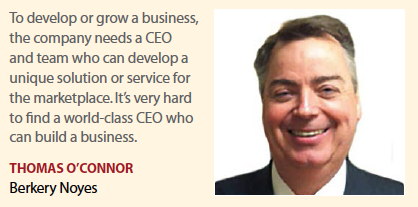 volume for the fifth consecutive quarter," says Greg Vlahos, life sciences partner at PwC. “Investors are being more selective on where they are placing their stakes."
volume for the fifth consecutive quarter," says Greg Vlahos, life sciences partner at PwC. “Investors are being more selective on where they are placing their stakes."
According to PwC, venture capitalists invested $11 billion in 891 deals in the third quarter of 2016. Total venture dollars deployed to startup companies decreased 36% for the third quarter of 2016 and total deal count was down 25%, compared with the third quarter of 2015 when $17 billion was invested in 1,189 deals in its record year. This is the 11th consecutive quarter of more than $10 billion in venture capital invested in a single quarter.
“The decline in venture capital activity this quarter is part of the normalization process that is expected after a quarter in which record-breaking investments dominated headlines," says Tom Ciccolella, U.S. venture capital market leader at PwC. “Despite deal count being the lowest since Q3 2010, quality deals continue to receive funding. The broader ecosystem remains healthy, bolstered by a lift in biotechnology within the top deals and overall, strong fundraising, and a continuation of the trend toward investments in nontraditional industries."
The investment in quality deals is a trend that Paul Yook, portfolio manager of BioShares Funds, and his team have also been seeing over the past two years. (Editor’s Note: LifeSci Index Partners LLC is an index provider of healthcare-based stock market indices and also serves as the investment sub-advisor for the BioShares exchange traded funds.)
“We’re starting to see tremendous availability of financing for high-quality startup companies," Mr. Yook says. “Over the past two years, we’ve seen some very large series A rounds. Traditionally, series A rounds were smaller, sometimes $10 million or less, and in a couple of cases, we’ve seen very large $50 million to $100 million, or even larger series A rounds, which is unprecedented."
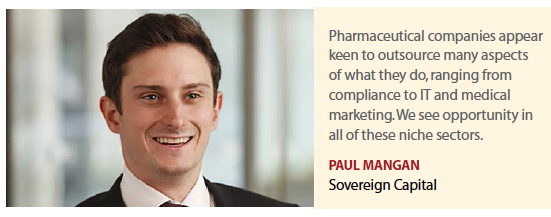 Furthermore, from an investment trend standpoint, he says the groups that are investing in early-stage biotech companies have really expanded.
Furthermore, from an investment trend standpoint, he says the groups that are investing in early-stage biotech companies have really expanded.
“We are seeing large venture capital funds working with syndicates, non-traditional venture capital investors, including state pension-type funds, universities, and even divisions of large mutual fund companies," Mr. Yook explains.
Part of what is driving this trend, he says, are the “big improvements" in terms of time to market for certain technologies and drugs — better, faster, cheaper drug development.
“There are a couple of examples specifically in the area of cancer where we’ve seen drugs get to market seven or eight years after inception of an idea, and that really is a big change from what used to be the 13-ish-year timeframe to get an old drug to market."
Much of the improvements are a result of cutting-edge science, the human genome sequence, as well as great improvement in computational power for technology and better in vitro and in vivo assays.
As a result, Mr. Yook says many private companies have become M&A targets well before they hit the public markets, and in many cases, these are billion-dollar plus acquisitions.
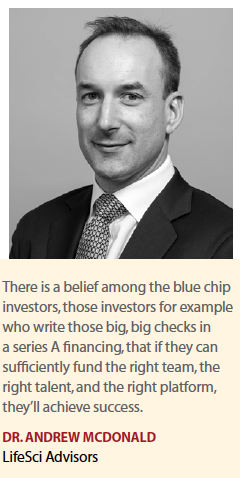 “A couple of recent examples are Stemcentrx, which we acquired by AbbVie, and Acerta Pharma, which was acquired for $4 billion, by AstraZeneca," Mr. Yoork says. “And so we’re seeing very large unicorn acquisitions of private companies in the clinical stage and this was a real rarity a decade ago or even five years ago."
“A couple of recent examples are Stemcentrx, which we acquired by AbbVie, and Acerta Pharma, which was acquired for $4 billion, by AstraZeneca," Mr. Yoork says. “And so we’re seeing very large unicorn acquisitions of private companies in the clinical stage and this was a real rarity a decade ago or even five years ago."
Andrew McDonald, M.D., CEO of LifeSci Advisors, says there is a belief among the blue chip investors, those investors for example who write those big, big checks in a series A financing, that if they can sufficiently fund the right team, the right talent, and the right platform, they’ll achieve success.
“This is one of the common themes that I have picked up when talking to the early-stage venture capital investors," he says. “We just went through a very big bull market in biotech and so some of the premier VC firms, such as Flagship Ventures and Third Rock, ARCH, Sofinnova, etc., have some decent returns based on the exits over the last five years."
Another trend Mr. Yook and Dr. McDonald are seeing correlates to PwC’s research as well and that is non-healthcare money getting into healthcare and biotech VC in a really big way.
For example, they note Sergey Brin and Sean Parker, tech billionaires and philanthropists, who have provided mass funding in areas such as cancer or longevity.
“Additionally, we are seeing major technology corporations such as Apple Ventures, Google Ventures, and Samsung Ventures, also investing heavily in biotechnology," Mr. Yook says. “But we are not seeing the reverse; companies like Merck are not expanding into Internet or technology venture capitals, so this is a big reason for nontraditional fund influx into our space."
Dr. McDonald adds: “We’re really bullish on the sector, particularly now that the election is over. There was a huge overhang in the election year that was precipitated by all of the rhetoric around drug pricing controls. The sector was down almost more than 35% in 2016 so this was a brutal year for biotech.
“But as history has shown, whenever there are dips in the sector, that is the time to buy," he continues. “We do have two publicly traded ETFs, the BioShares ETFs, BBP and BBC, so we do have our finger on the pulse of the public biotech companies. We believe this is the time to get in. Who knows when the sector will go on its next tear."
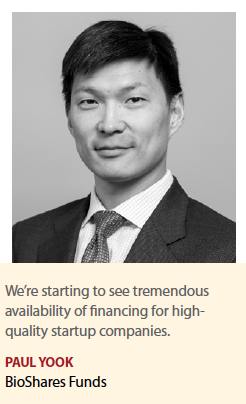 Outside of the pharma and biotech sectors, life-science investors are also seeing opportunities in outsourced services, particularly mission critical services such as pharmacovigilance, regulatory affairs, and compliance.
Outside of the pharma and biotech sectors, life-science investors are also seeing opportunities in outsourced services, particularly mission critical services such as pharmacovigilance, regulatory affairs, and compliance.
For Paul Mangan, deal origination at Sovereign Capital, these are where the exciting opportunities lie.
“Sovereign is now investing its 4th Fund, which is £395 million and we are focused on continuing our track record in the wider healthcare services sector," he explains. “As part of this fund, we supported the management buyout of Xendo, a Netherlands headquartered provider of regulatory affairs, pharmacovigilance, compliance, and engineering services. We are working closely with the management team to support an acquisitive and organic strategy to expand the group internationally and accelerate their growth through a ‘buy and build’ strategy. This means our focus for the next few years will be on finding high-quality complementary businesses operating in this space."
Within the global pharmaceutical market because of increasing pricing pressure due to escalating healthcare costs, coupled with a decline in R&D productivity, the life-sciences industry has sought to manage these costs through outsourcing activities traditionally performed in-house and increasingly higher up in the value chain.
“This has driven our investment thesis for focusing on outsourced service providers, as pharma companies will continue to not only seek cost advantages but also gain access to highly specialized and high-quality services that are no longer available in house," Dr. Mangan says. “Pharmaceutical companies appear keen to outsource many aspects of what they do, ranging from compliance to IT and medical marketing. We see opportunity in all of these niche sectors."
Jose Rodriguez, director of Sovereign, says it was the fragmented nature of the regulatory affairs and pharmacovigilance sectors in Europe and the Unite States, that drew his firm’s attention.
“The work we have done over the last three years has been about mapping the sector and identifying literally hundreds of businesses that provide these niche services to big pharma and biotech companies," he says.
Mr. Rodriguez says the intention is to help develop these companies into international entities for scalability to meet the global demand of pharma and biotech.
“In the future, this will be a very important factor," he adds. “The client demands are becoming increasingly more complex and the need for more sophisticated services is becoming more important."
Mr. Rodriguez’s says even though Sovereign has been investing in healthcare for more than 15 years, it made its first investment in the life sciences with the backing of Xendo.
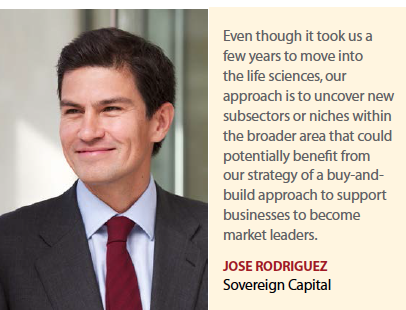 “Even though it took us a few years to move into the life sciences, our approach is to uncover new subsectors or niches within the broader area that could benefit from our strategy of a buy-and-build approach to support businesses to become market leaders."
“Even though it took us a few years to move into the life sciences, our approach is to uncover new subsectors or niches within the broader area that could benefit from our strategy of a buy-and-build approach to support businesses to become market leaders."
From a trending perspective, Thomas O’Connor, managing director of Berkery Noyes, says workflow tools that assist in medical practices or the performance a clinical trial, or that smooth the operations of healthcare entities are areas of interest. (Berkery Noyes is an independent investment bank focused on mergers and acquisitions advisory, debt and equity financing, and valuation services for a wide range of companies throughout the information industry.)
“We continue to see lots of entrepreneurs developing unique solutions," he says. “In addition, we see lots of opportunities for solutions that move hospital and other healthcare organizations off on-premise solutions to the SasS/cloud opportunities, where there are lower upfront costs, fewer IT hassles, and better updates."
Mr. O’Connor says additionally there is an increased focus on cost transparency; consolidation among vendors to achieve scale and efficiency; the continued consumerization of healthcare; and a continuing and heavy investment by private equity backing seasoned entrepreneurs.
Investing in the Management Team
When VCs are evaluating the strength of a company for potential investment, in addition to the science and or technology, the management team is an important criteria for evaluation.
“The team’s track record and the breadth of knowledge goes beyond the management team; we also look at who is on the board and who are the other investors in the company," Dr. McDonald says. “What we typically see is a company that’s been funded by blue chip investors, generally has a very high-quality management team, and a terrific board. In other words, you won’t see a company that has blue chip investors with a marginal management team. The investors will swap out a mediocre team for an all-star team."
Mr. Yook adds he looks for management teams that are all in.
“We like to invest in companies whose management teams have a lot of equity, in other words skin in the game," he says. “They are all in, rather than having their own bets diversified. So we look for focus. We like it when they believe that their idea is worth betting their careers on for the long term."
“Biotech companies, as you probably know, generally spend a lot of money on research and development, so management teams that have a real equity stake in the company are there because of the equity value," Dr. McDonald says. “To us that is a bullish indicator."
For Mr. Mangan, when his company is looking to partner with a management team, he looks for a combination of technical expertise, innovation, and vision plus the all-important ability to commercialize a service.
“Typically we invest in people-centric businesses, so the management teams we back are key to the success of the businesses we support," he says. “Our long-term plan is to create market leading businesses, so we believe that if we focus on quality, growth, and hiring the right talent we help create significant value for all shareholders."
Mr. O’Connor believes one of the most overlooked assets is a high-quality CEO and team.
“To develop or grow a business, the company needs a CEO and team who can develop a unique solution or service for the marketplace. It’s very hard to find a world-class CEO who can build a business." (PV)

















